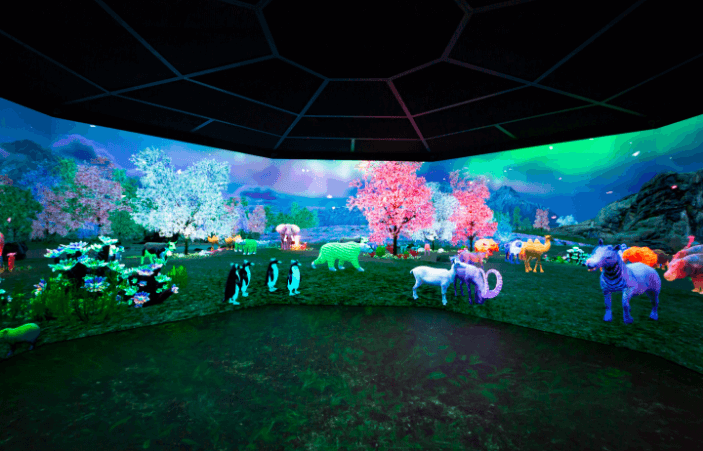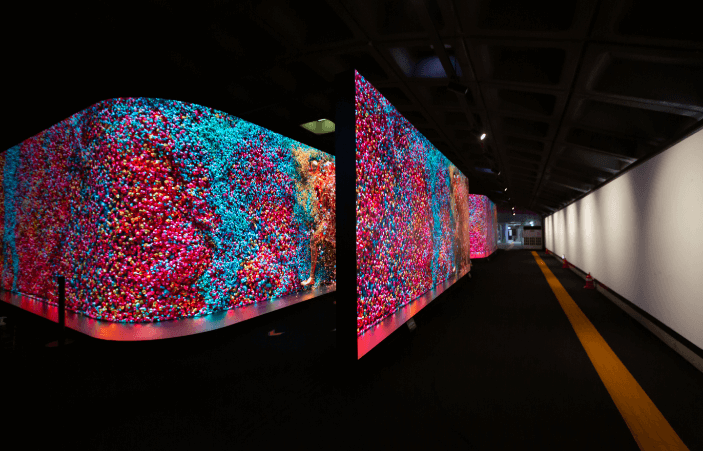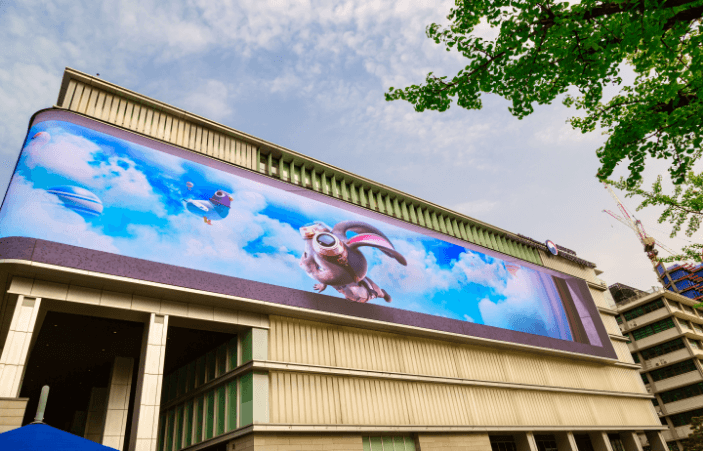We introduce a course that embodies everything K-Culture represents, uniquely Korean yet globally resonant. Prepare for a dynamic journey that spans generations, from traditional cultural experiences that evoke classic beauty to extraordinary experiences that promise awe and wonder.
* Walking Standard

Gyeongbokgung Palace gives visitors a glimpse into the past of the Joseon Dynasty. The Guard Changing Ceremony is a reenactment of a segment of palace life from that era and is captivating enough to stop any passerby. The ancient splendor of Gyeongbokgung forms a striking contrast with the modern skyscrapers beyond Gwanghwamun, and the sight of guards in traditional attire juxtaposed with tourists capturing the moment on their smartphones is particularly intriguing.
The Guard Changing Ceremony at Gyeongbokgung occurs twice daily at 10 a.m. and 2 p.m., except Tuesdays. The ceremony lasts roughly 15 to 20 minutes and captivates onlookers with its tense, precise movements and the distinctive sounds of traditional musical instruments. Although the terms associated with the participants such as Sumunjang, Jongsagwan, Sujongjang, Gapsa, Jeonrugun, Jungbyeong, Daejol, Kisu, Chwirachi, and Seowungwansaengdo may seem unfamiliar and complex, the experience is enhanced by the commentator's explanations, so that the spectacle unfolding before the visitors' eyes is all the more fascinating.
- Address Gyeongbokgung Palace Main Gate (Gwanghwamun), 161, Sajik-ro, Jongno-gu, Seoul
- Inquiry 02-3210-1645
The K-Culture Museum, located at Gyeongbokgung Station, contrasts with the serene vistas of Gyeongbokgung. ”It is a newly unveiled space in Seoul Metro Art Museum Branch 2 that features a media garden in the heart of the city. The museum screens a wide range of media art with the themes of urban healing and meditation.
With 12 themes, visitors can explore deep space in 3D, navigate a starry utopia, or see real-time weather data from the Han River visualized as a cosmic image in “Reborn.” Notably, “Scenery of Time” encapsulates the philosophy of Korean gardens, which pursued harmony with nature from the Unified Silla to the middle of the Joseon Dynasty. Other themes include Existence in Nature, Words We Need, Forest, Water Garden, Tomorrow's Yesterday, Gemstones, Imagined Ocean, Land of Life, and more.
- Address Gyeongbokgung Station (Line 3), 130 Sajik-ro, Jongno-gu, Seoul
- Inquiry 02-2068-1176
Gwanghwamun Square offers yet another innovative tech-integrated content experience. The K-Culture Screen is a public media canvas for creators worldwide that presents media arts daily from 6 a.m. to 10 p.m.
Screenings are repeated hourly so that visitors can experience K-Culture media art regardless of the time of their visit. Sixteen captivating themes include Adventures of the Black Rabbit, The Kinetic, Gwanghwa Objets d’Art, Gwanghwa Chronicles, Gwanghwa Clock Tower, Tiger, Soft Body, Whale, Wave, Eternal Vitality, Living Monster, Digital Parade, Animal Times, Trio of Injeolmi, Aerial Garden, and Lightning.
- Address The Republic of Korea History Museum at Gwanghwamun Square
- Inquiry 02-2068-1176
HiKR GROUND is a prime example of K-Content and a highlight of the K-Culture journey. This space, operated by the Korea Tourism Organization Seoul Center, has been revamped into a Korean tourism promotion center and a multifaceted cultural venue. It is spread across five floors, and visitors can engage with interactive content including touch, visual, auditory, and kinesthetic experiences. Though it mainly attracts Millennials, Gen Z visitors, and foreign tourists, seniors will also find many things to enjoy here.
The first floor features the impressive HiKR GROUND Media Wall, while the second floor, recognized as the focal point of HiKR GROUND, has K-Pop Ground, an immersive exhibit focused on the Hallyu wave. Anyone fond of K-Culture can become a K-Pop creator. The third floor, called HiKR GROUND Atrium, showcases various artworks by local artists. Linking the third and fourth floors is the HiKR GROUND Tower, which introduces an array of Korean tourism content. On the fourth floor, visitors to the HiKR GROUND Cave can experience a multi-sensory journey of local tourist attractions. Finally, the fifth floor has the HiKR GROUND Lounge and cafe, where you can enjoy a view of Cheonggyecheon Stream.
- Address Korea Tourism Organization, 40 Cheonggyecheon-ro, Jung-gu, Seoul
- Inquiry 02-729-9594(HiKR GROUND Operations Office)
The ideal way to conclude a journey is by revisiting previous attractions aboard a tram while comfortably taking in the scenic view. The We Ride Seoul Tram, featuring a romantic vibe with 20th-century retro charm, is inspired by the trams that once actively operated in Seoul. Although the actual Seoul trams disappeared into history in November 1968, the design has revived the style of tram no. 381, displayed in front of the Seoul History Museum, and captures the era's nostalgia. On the We Ride Seoul Tram, riders are given a unique sensation of the past and present.
The tram ride lasts approximately 1 hour and 30 minutes. Reservations are required in advance for seat selection. The departure point is in front of the Korea Tourism Organization Seoul Center, where HiKR GROUND is located. This electric-powered tram features standard seats as well as unique seats equipped with pedals. If the conductor stops and rings a bell, passengers on the pedal seats must pedal to boost power. This unusual experience is heightened with a cultural commentary from a ticket inspector who acts as a guide. Seniors can reminisce about their childhood, while younger passengers enjoy a unique cultural experience.
* Please check in advance, because routes may change based on daily conditions.
- Address 40 Cheonggyecheon-ro, Jung-gu, Seoul
- Inquiry 070-7722-9284

한국관광공사가 창작한 본 저작물은 공공누리 제4유형 조건에 따라 이용이 가능합니다.
한국관광공사에 의해 창작된 [청와대 코스 ⑥] 시니어와 MZ의 화합, 시대를 초월하는 K-컬처 여행은 공공라이선스에 따라 이용할 수 있습니다. 사진 자료의 경우, 피사체에 대한 명예훼손 및 인격권 침해 등 일반 정서에 반하는 용도의 사용 및 기업 CI, BI로의 이용을 금지하며, 상기 지침을 준수하지 않음으로 인해 발생하는 이용자와 제3자간 분쟁에 대해서 한국관광공사는 책임을 지지 않습니다.











